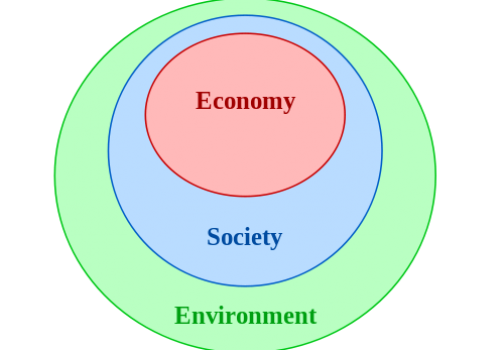In 2010, the United Nations Global Compact conducted a survey [PDF] on sustainability and found that 93% of businesses consider it important to their future success.
But most companies also have investors to please, and — let’s face it — making the business case for sustainability can be difficult. As CEO of an analytics firm, I can say that we are seeing a surge in interest among Fortune 500 companies for analytical models that help determine the impact of going green on their bottom line.
Many companies have already begun measuring the financial impact of their green strategy. For instance, one national chain of convenience stores started tracking green analytics data to optimize transportation routes to and from its distribution centers. By analyzing information such as orders, shipments, routes, and truck capacity they crafted a model that helped re-route delivery trucks, which reduced annual mileage by 300,000 at a single distribution center. With 25 centers across the US, this project has the potential to reduce the company’s overall mileage by millions, translating into huge dollar savings and emissions reductions. When new routes or distribution centers are added, the company now applies this model to maximize fuel efficiency.
In another example, a large US-based specialty retail chain wanted to determine the chief drivers of store energy efficiency in order to reduce usage and greenhouse emissions. They built a green analytics model examining factors such as weather, HVAC (Heating Ventilation and Air Conditioning), store size, and layout to determine why energy consumption differed among stores. The resulting data not only enabled the retailer to reduce overall energy consumption by 8-10%, but was also applied to optimize energy consumption in new-store construction and to set usage targets for future planning cycles. For example, the retailer was able to migrate to automatic HVAC systems for better insulation and adjust store timings to optimize energy usage.
In these cases, going green put more cash in the companies’ pockets. But in other cases, the facts may show that the sustainable route will not save money at all. To get started on analyzing the impact of green on your business:
Take a close look at your supply chain. Collect baseline measurements on energy, material and natural resource usage. Measuring is the first step: If you can’t measure it, you can’t manage it.
Establish some short-term goals. With this supply-chain information in hand, select an initial project that the use of green analytics might impact rather quickly. For example, determine heating oil consumption in one store, and identify the drivers of wastage. Once this is done, take a deep dive — establish a team or task force to determine innovative ways to control wastage.
Expand the initiative. If your small-scale goal succeeds, expand by rolling it out to additional markets. That’s the approach that the convenience chain above took — they began the initiative with one distribution center, and then leveraged the results in centers across the country.
Communicate your vision. Broadly share the results and impact of these initial projects within your organization. Not only will this gain buy-in and support for future sustainability efforts, but the work will have much greater impact if your vendors, suppliers, and customers have bought into the ideas both philosophically and practically.
Engage the entire supply chain. Once your organization is serious about green’s impact on the ROI, further expand your efforts by applying the green initiative across your supply chain. For example, reduce inefficiencies and remove duplicates across your supply chain. Begin with choosing the right vendors, then incorporate green compliance checks and choose vendors not just on price but also based on quality and environmental factors.
Measuring the concrete impact of green lies at the intersection of sustainability and business. Already, 130 of the Fortune 500 have officers at the level of Vice President or higher that are focused on sustainability — for example, a Chief Sustainability Officer. What is your organization doing to ensure it is addressing sustainability issues, without impairing its ability to thrive on the fiscal front?
Reproduced fro HBR, 01/12/2016


